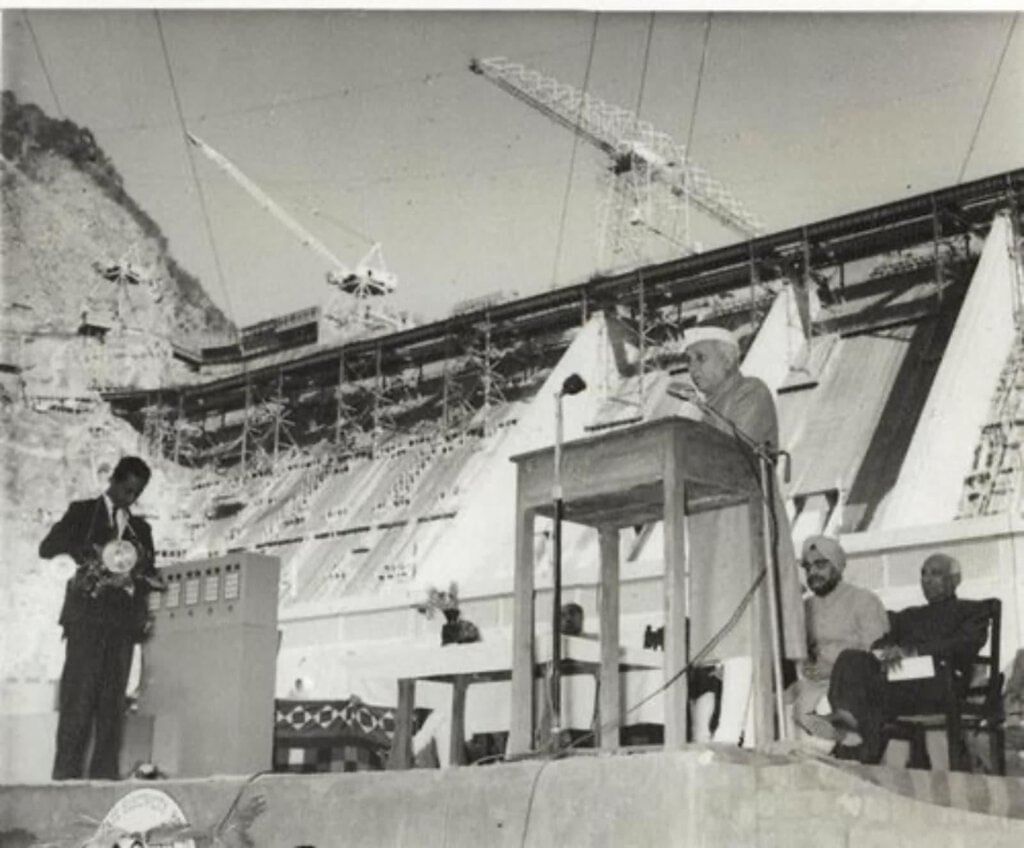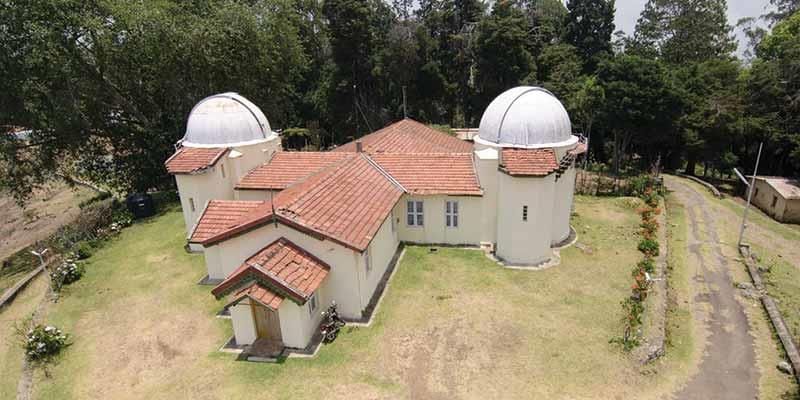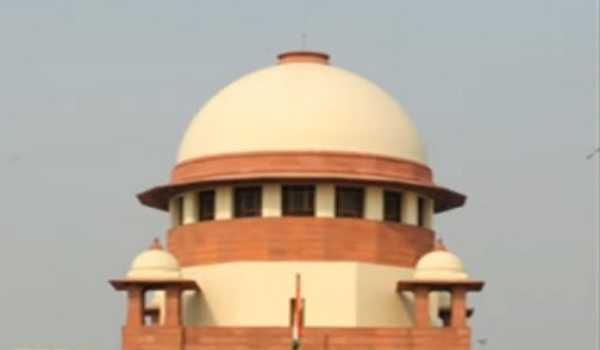UPSC Daily Current Affairs: 17th May 2025 | Current Affairs & Hindu Analysis: Daily, Weekly & Monthly PDF Download
GS2/Polity
50 Years of Sikkim’s Integration with India
 Why in News?
Why in News?
May 16 is celebrated annually as Sikkim Day, commemorating the historic moment in 1975 when the Kingdom of Sikkim officially became a state of India.
Key Takeaways
- The Kingdom of Sikkim was founded in 1642 with the coronation of Phuntsong Namgyal as the first Chogyal.
- Sikkim remained a Buddhist monarchy for 333 years until its merger with India.
- The Treaty of Tumlong (1861) established Sikkim as a British protectorate.
- India's integration of Sikkim involved a series of treaties and agreements post-independence.
Additional Details
- Foundation of Sikkim: Established in 1642 when three Tibetan lamas crowned Phuntsong Namgyal as the first Chogyal, marking the start of the Namgyal dynasty.
- Treaty of Tumlong (1861): This treaty allowed the Chogyals to maintain internal authority while the British managed external affairs.
- Other significant treaties include the Treaty of Titaliya (1817), Calcutta Convention (1890), and Lhasa Convention (1904).
- Post-1947 Status: After India's independence, Sikkim faced a unique situation due to its British treaty status, leading to a Standstill Agreement under Nehru’s government.
- Indo-Sikkim Treaty of 1950: This treaty recognized Sikkim as an Indian protectorate, with India overseeing defense and foreign relations.
- Merger with India: A referendum in April 1975 saw over 97% of voters favoring the abolition of the monarchy and joining India.
- Article 371F: This article was added to the Indian Constitution to protect Sikkim’s unique cultural and legal status following its merger.
The integration of Sikkim into India not only marked a significant political change but also ensured the safeguarding of its unique history and identity through special provisions in the Indian Constitution.
GS2/International Relations
The New Normal After Pahalgam: India’s Response
Why in News?
The unfolding of Operation Sindoor in May 2025 marked a significant shift in India's counter-terrorism doctrine, particularly in its response to cross-border threats from Pakistan. Following a deadly terrorist attack in Pahalgam, the Indian government's swift and calculated response, along with a subsequent ceasefire agreement, illustrates a broader transformation in South Asia's security landscape.
Key Takeaways
- Operation Sindoor represents a strategic milestone in India's military and diplomatic initiatives.
- The operation shifted India’s counter-terrorism policy towards a doctrine of deterrence by punishment.
- India's approach to responding to terrorism has evolved into a new normal involving cross-border conventional strikes.
Additional Details
- Operation Sindoor: This operation was not merely a retaliatory strike; it was a full-spectrum initiative targeting nine high-value terrorist-linked assets in Pakistan. This marked a departure from India’s historically measured responses, indicating a strategic pivot towards more aggressive military action.
- Impact of U.S. Involvement: The United States initially maintained a non-interventionist stance but later engaged in high-level communications as the risk of nuclear escalation emerged, highlighting its role in de-escalating tensions.
- Strategic Autonomy: Despite U.S. involvement, India remains committed to its policy of strategic autonomy, resisting formal mediation from external powers.
- Future Considerations: India must enhance its military capabilities and intelligence systems to operationalize this new doctrine effectively, ensuring readiness against potential threats.
In conclusion, Operation Sindoor signifies a transformative moment in India's national security approach, reflecting a deliberate effort to redefine strategic red lines and diminish the impact of Pakistan's nuclear capabilities. As South Asia navigates this new phase of security competition, India’s ability to balance strength with restraint will be crucial for regional stability.
GS2/International Relations
Terror, Treaties, and Civilisations: Indus Through the Centuries
 Why in News?
Why in News?
On April 22, a terrorist attack in Pahalgam, Kashmir, resulted in the deaths of 26 civilians. In response, the Indian government initiated several diplomatic measures, including the suspension of provisions under the Indus Waters Treaty (IWT).
Key Takeaways
- The Indus Waters Treaty is critical for water-sharing between India and Pakistan.
- It has endured for over six decades despite ongoing political tensions and conflicts.
- Recent terrorist incidents have prompted diplomatic responses regarding the treaty.
Additional Details
- Framework for Water Sharing: The IWT provides a legally binding agreement on the management of the Indus River and its tributaries, significantly reducing the potential for water conflicts between the two nations. For example, India controls the eastern rivers (Ravi, Beas, Sutlej), while Pakistan oversees the western rivers (Indus, Jhelum, Chenab).
- Endurance Amid Political Tensions: Despite historical wars and terrorist attacks, such as the 2008 Mumbai attacks and the 2019 Pulwama attack, the treaty has maintained a channel for cooperation, proving its resilience over time.
- Diplomatic Leverage and Stability: The treaty acts as a strategic diplomatic tool for India, which sometimes uses it as leverage while ensuring that water flow is maintained, thereby preventing escalation into broader conflicts. Following the 2023 Pahalgam attack, India announced the suspension of certain treaty provisions as a diplomatic measure.
- Impact of Climate Change: Climate change significantly affects the Indus Basin, with glacial melt contributing to water flow variability. Approximately 80% of the basin's water comes from glacial melt, which is becoming increasingly unpredictable, leading to both short-term floods and long-term water shortages.
- Colonial Irrigation Projects: British colonial efforts led to extensive canal systems that created shared water infrastructure. However, these systems also altered natural river flows and led to disputes over water access post-independence, as no formal agreements were established at partition.
- Lessons for the Future: India can learn from other successful river treaties by promoting cooperative water management, including climate change adaptation, and establishing clear dispute resolution mechanisms.
In conclusion, the Indus Waters Treaty remains a crucial element of India-Pakistan relations, especially in light of contemporary challenges such as terrorism and climate change. The ongoing need for cooperation and effective management of shared resources is essential for maintaining peace and stability in the region.
GS1/History & Culture
Restoration of Rajon ki Baoli
 Why in News?
Why in News?
The Archaeological Survey of India (ASI), in collaboration with private entities, has successfully completed the restoration of Rajon ki Baoli, a significant 16th-century stepwell from the Lodi era located in New Delhi.
Key Takeaways
- Rajon ki Baoli is situated in the Mehrauli Archaeological Park, Delhi.
- Constructed in 1506 CE by Daulat Khan Lodi, an official under Sikandar Lodi.
- The term "Rajon ki Baoli" translates to "Stepwell of the Masons," highlighting the craftsmanship of local masons.
- The structure is rectangular, spanning 1,610 sq m and reaching a depth of 13.4 meters.
- It features a four-level design, with only the topmost tier visible from the ground.
Additional Details
- Architectural Features: The stepwell includes various elements such as verandas, arched corridors, 12-pillared arcades, and stucco medallions. It also contains a mosque, a tomb, and a chhatri (pavilion).
- Purpose: Originally served as a water source and a resting place, it had significant social and religious utility.
- The Lodi Dynasty: Ruled the Delhi Sultanate from 1451 to 1526, established by Bahlul Lodi, the first Afghan ruler in Delhi. Key rulers include Sikandar Lodi and Ibrahim Lodi, with significant contributions to agriculture and culture.
The successful restoration of Rajon ki Baoli not only preserves an important historical structure but also reflects the rich cultural heritage of the Lodi Dynasty, marking a pivotal era in Indian history.
GS3/Economy
RBI’s Economic Capital Framework Under Review: Government Eyes Higher Dividend
Why in News?
The Reserve Bank of India (RBI) recently held its 615th board meeting to review the Economic Capital Framework (ECF). This review is significant as it coincides with the Finance Ministry's parallel assessment, which could influence the amount of dividend payouts from the RBI to the government, especially amidst increasing public spending demands.
Key Takeaways
- The RBI is reviewing its Economic Capital Framework (ECF) introduced in 2019.
- The review may lead to higher dividend payouts to the government, crucial for funding increased defence spending.
- Record surplus transfers from the RBI are projected for FY 2024-25.
Additional Details
- Economic Capital Framework (ECF): The ECF was established following the recommendations of the Bimal Jalan committee and outlines the risk provisioning norms the RBI must maintain through the Contingency Risk Buffer (CRB), which is crucial before any surplus is transferred to the government.
- Key Features of ECF:
- Contingency Risk Buffer (CRB): This buffer is designed to protect against financial instability and is recommended to be between 5.5% and 6.5% of the RBI’s balance sheet.
- Surplus Transfer Mechanism: Once CRB requirements are satisfied, any excess can be distributed as dividends to the government.
- Five-Year Review Cycle: The ECF is subject to review every five years as per the Jalan committee's recommendations.
- The ongoing review since January 2025 aims to assess if the current CRB range is too conservative, potentially allowing for increased dividend transfers.
- In FY 2023-24, the RBI transferred a record ₹2.11 lakh crore, significantly higher than the previous year's ₹87,416 crore.
- Projected surplus transfers for FY 2024-25 are expected to reach between ₹2.5 lakh crore and ₹3 lakh crore.
The decision regarding the ECF review and surplus distribution could redefine the fiscal relationship between the RBI and the government, especially in a crucial pre-election year. As the RBI prepares for its upcoming board meeting, the implications of a higher dividend transfer could significantly impact India's fiscal strategy.
GS2/Governance
The Ingredient to Turn Around Nutrition Outcomes
Why in News?
Despite significant economic progress and welfare initiatives in India, malnutrition remains a critical national issue, particularly affecting women and girls. The Prime Minister’s Overarching Scheme for Holistic Nourishment (POSHAN) Abhiyaan, launched in 2018 to combat malnutrition by 2022, has made some strides, but persistent gender disparities hinder its effectiveness.
Key Takeaways
- 57% of women aged 15 to 49 are anaemic, compared to 26% of men.
- POSHAN 2.0 has significant funding but has underperformed in addressing malnutrition.
- Cultural norms contribute to nutritional inequality, with women often eating last and least.
- Women's empowerment positively influences family nutrition outcomes.
Additional Details
- POSHAN 2.0: This is India's largest nutrition initiative with a budget of ₹24,000 crore for 2022-23. However, only 69% of the funds were utilized, and anaemia rates among women have increased.
- Women’s Empowerment: Research indicates that when women control household finances, family nutrition improves. However, many women in India face economic challenges, with only 5% holding regular salaried jobs.
- The connection between awareness and empowerment is critical; without control over household spending, mere awareness of nutrition cannot lead to better outcomes.
To effectively combat malnutrition, POSHAN 2.0 must transition to a more integrated approach, focusing not only on health outcomes but also on economic empowerment. By recognizing women as active agents rather than passive beneficiaries, India can build a malnutrition-free future anchored in gender equality and empowerment.
GS3/Science and Technology
125 Years of Kodaikanal Solar Observatory (KoSO)
 Why in News?
Why in News?
The Department of Posts has released a commemorative postage stamp to celebrate the 125th anniversary of the Kodaikanal Solar Observatory (KoSO), which is one of India's oldest and most significant research centers dedicated to solar studies.
Key Takeaways
- Established in 1899, KoSO focuses on solar research.
- Located in Tamil Nadu, in the Palani Hills, chosen for optimal observation conditions.
- Equipped with advanced telescopes for observing solar phenomena.
- Contributes to understanding the Sun's impact on Earth's climate and space weather.
Additional Details
- Founding: KoSO was founded in the late 19th century following atmospheric surveys conducted by Charles Michie Smith.
- Scientific Importance: The observatory plays a crucial role in studying solar phenomena and their effects on Earth.
- Historic Observations: Significant discoveries include the Evershed Effect in 1909 and the maintenance of one of the world’s longest continuous solar datasets from 1904 to 2017.
- Digitization: KoSO was the first Indian observatory to digitize solar data since 1984, currently maintaining a digital archive comprising approximately 1.48 lakh images (about 10 TB).
- Wider Scientific Work: Over the years, KoSO has expanded its research to include cosmic rays, radio astronomy, ionospheric physics, and stellar astrophysics.
The Kodaikanal Solar Observatory continues to be a vital institution for solar research, contributing extensively to our understanding of the Sun and its broader implications for science and technology.
GS2/Governance
Drinking to Death: On Illicit Liquor Cases
Why in News?
Recently, in Majitha, Amritsar district of Punjab, 21 individuals aged between 26 and 80 lost their lives, with 10 others critically hospitalized after allegedly consuming spurious liquor.
Key Takeaways
- Hooch tragedies involve deaths or severe illnesses caused by consuming illicit liquor.
- Poverty drives low-income individuals to seek cheap, unsafe alcohol.
- Weak regulatory oversight and corruption contribute to the prevalence of spurious liquor.
Additional Details
- Hooch Tragedies: These incidents often lead to mass casualties due to the consumption of toxic brews, primarily made from methanol.
- Poverty and Social Vulnerability: Many victims of the 2023 Punjab hooch tragedy were from low-income backgrounds, highlighting the socio-economic factors at play.
- Corruption and Nexus Among Stakeholders: A collaboration between bootleggers, local politicians, and law enforcement often protects illegal operations, undermining public safety.
- Ineffective Legal Enforcement: Laws like the Poison Act are not adequately enforced, resulting in low conviction rates for those responsible.
The systemic issues surrounding illicit liquor production and consumption in India necessitate urgent attention. Bootleggers and corrupt law enforcement agencies bear significant responsibility for these tragedies, while regulatory authorities and local politicians must also be held accountable. The legal framework currently in place has proven ineffective, failing to deliver justice and prevent future incidents.
GS1/Indian Society
Sacred Jharkhand Hill Sparks Dispute Between Jains and Santals
Why in News?
The Jharkhand High Court has directed the state government to enforce a ban on meat, alcohol, and other intoxicants on a sacred hill located in Giridih district. This hill is known as Marang Buru by the Santal Adivasi community and as Parasnath by Jains, serving as a significant religious site for both groups and a focal point for a long-standing inter-community conflict.
Key Takeaways
- The hill is revered by both the Santal Adivasi community and Jains, leading to disputes over its use.
- Legal battles have ensued regarding hunting rights and the enforcement of bans on certain practices.
Additional Details
- Jain Significance: Parasnath Hill is crucial for Jains, believed to be the site where 20 of the 24 tirthankaras, including Parshvanatha, attained nirvana. It features over 20 Jain temples and pilgrimage sites, reflecting its deep historical significance in Jain tradition.
- Santal Significance: For the Santal Adivasi community, Marang Buru is considered the home of their supreme animist deity. Important sacred sites such as Jug Jaher Than and Dishom Manjhi Than are located here, where essential rituals are conducted. The hill also plays a pivotal role during the annual Hudur Durga festival in December.
- The tribal council, Lo Bir Baisi, meets at the hill's base to address major disputes, including the historic Santal Hul rebellion in 1855 against oppressive outsiders.
The dual sanctity of the hill has made it a contested religious space, leading to various historical claims and disputes between the communities. The conflict intensified with the Sendra festival, a traditional hunt significant to the Santals, which clashes with Jain principles of non-violence. Legal battles have highlighted the complexities of customary rights, with the Privy Council upholding Santal hunting traditions against Jain objections.
Since India's independence, Adivasi rights over Marang Buru have diminished due to increased state control and external pressures, leading to restrictions on their rituals. Recent government directives have further complicated the situation by enforcing bans that prioritize Jain sentiments over Santal traditions, igniting further disputes.
Overall, the ongoing conflict illustrates the challenges of coexistence between differing cultural and religious practices in shared sacred spaces.
GS2/Polity
Supreme Court Strikes Down Ex-Post Facto Environmental Clearance
 Why in News?
Why in News?
In a landmark ruling aimed at bolstering environmental governance in India, the Supreme Court invalidated the Ministry of Environment's 2017 notification and the 2021 Office Memorandum (OM). These documents allowed for ex-post facto (retrospective) environmental clearance (EC) for projects that started without prior approval. This judgment reinforces the Environment Impact Assessment (EIA) Notification of 2006 and upholds the constitutional right to a pollution-free environment as outlined in Article 21.
Key Takeaways
- The Supreme Court annulled the 2017 notification and the 2021 OM, which tried to regularize violations of the EIA Notification.
- Prior environmental clearance is deemed non-negotiable under Indian environmental law.
- Future ex-post facto environmental clearances are permanently banned, underscoring the need for compliance with environmental regulations.
Additional Details
- Striking Down of Notifications: The 2017 notification allowed a six-month amnesty for projects operating without prior EC, while the 2021 OM set procedures for handling violations. The Court deemed both illegal, as they sought to normalize breaches of the law.
- Constitutional and Legal Framework: The ruling emphasizes that the right to life includes a pollution-free environment, supported by Article 51A(g), which stresses the duty of citizens to protect the environment. The ruling aligns with the Environment (Protection) Act of 1986.
- Violation and Institutional Lapses: Over 100 projects received ECs under the "violation category," including various industries like coal, cement, and real estate. The Expert Appraisal Committee (EAC) was criticized for its facilitation of these violations.
- Implications of the Verdict: Existing clearances granted under the now-invalidated rules remain valid, but the closure of the ex-post facto route aligns India's practices with global standards.
The Supreme Court's ruling sends a strong message that economic development must not compromise environmental integrity. By reaffirming the principle of prior clearance, the verdict emphasizes the importance of accountability in the use of natural resources, especially as environmental degradation continues to escalate in urban areas like Delhi.
GS2/Polity
Permanent Lok Adalats
Why in News?
Permanent Lok Adalats (PLAs) in 16 districts of Rajasthan have ceased to function due to the non-extension of tenure for their presiding officers and members, raising concerns about the accessibility of dispute resolution in these areas.
Key Takeaways
- PLAs are statutory bodies established under the Legal Services Authorities Act, 1987.
- They were introduced in 2002 to provide speedy and affordable resolution of disputes related to public utility services.
- PLAs operate continuously, unlike regular Lok Adalats which are held on an ad hoc basis.
Additional Details
- Legal Basis: PLAs are founded under Section 22-B of the Legal Services Authorities Act, 1987, providing a framework for their operation.
- Disputes Handled:They specialize in issues concerning various public utility services including:
- Transport (air, road, water)
- Postal services
- Telecom
- Electricity
- Water supply
- Sanitation
- Healthcare
- Insurance
- Composition: Each PLA consists of a Chairman (a current or retired District Judge or higher) along with 2 members who possess experience in relevant public utility sectors.
- Functioning: PLAs are always available for dispute resolution and can hear cases involving claims up to ₹1 crore.
- Unique Power: If conciliation fails, PLAs can adjudicate disputes and issue a final and binding award, similar to a civil court.
This system aims to enhance access to justice and resolve disputes effectively, especially in essential public utility services. The recent cessation of operations in Rajasthan highlights the need for timely appointments to maintain this crucial service.
|
38 videos|5288 docs|1117 tests
|
FAQs on UPSC Daily Current Affairs: 17th May 2025 - Current Affairs & Hindu Analysis: Daily, Weekly & Monthly
| 1. What are the key events that led to Sikkim's integration with India 50 years ago? |  |
| 2. How has the integration of Sikkim with India impacted its cultural identity? |  |
| 3. What are the major economic changes in Sikkim since its integration with India? |  |
| 4. What challenges has Sikkim faced in the last 50 years post-integration? |  |
| 5. What role does the Supreme Court play in environmental matters related to Sikkim? |  |





















